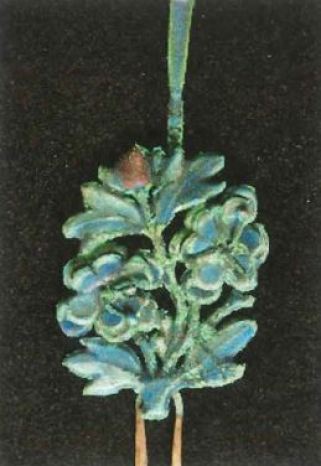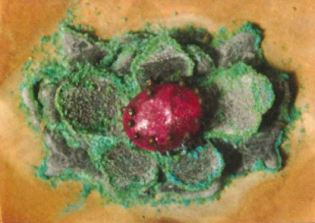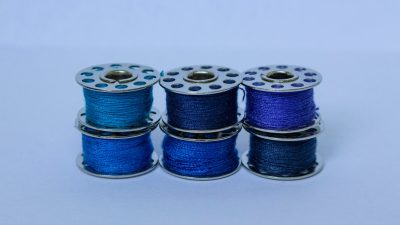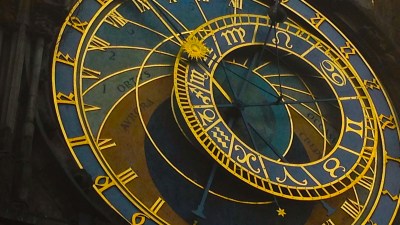
This article originally appeared in the January/February 2011 edition of Museum magazine.
In the high humidity of summer, bronzes erupt with powdery green corrosion and paper becomes speckled with mold. Droplets of liquid form on glass or enamel inside museum exhibition cases. When the heat is on in the winter, white salts exude from the pores of stone. Long cracks appear in wood or ivory sculpture. Skins, parchment or paper can cockle or tear.
With such diverse materials and so many different reactions possible, how do we best preserve entire collections? For decades, museums adhered to certain prescribed “ideal” conditions of relative humidity and temperature in an attempt to protect the objects in their care. But uncertainty about the efficacy of these guidelines for all types of materials, along with concerns about the environment and the economy, have now motivated many in the museum profession to consider new standards for the storage, loan, and exhibition of museum holdings. As part of this movement, the American Institute for Conservation of Historic and Artistic Works (AIC), the national association of conservation professionals, has created a working group to revise recommendations and provide guidance to the museum community.
Objects can hardly be expected to respond in similar ways to environmental conditions. Some materials are vastly more sensitive than others to specific conditions or certain agents of deterioration. And profoundly different states of preservation are observed in similar artifacts and works of art. Just consider the diversity of materials and methods used in their creation and the history of their use and restoration. Some crack, warp, shrink and flake when exposed to climatic fluctuations, while others seem impervious. In addition to relative humidity and temperature, environmental agents such as light, particulates, pollutants, mold and insects contribute to the general state of collection preservation. The damage these agents inflict may be further enhanced by certain humidity and temperature levels. Research and practice over the past 100 years have produced mixed results and observations. Complex but incomplete research findings have been reduced to oversimplified formulas with unintended consequences.


Within the past 40 years, as air conditioning technology made tremendous strides, standards for temperature and relative humidity evolved as a way of ensuring a suitable environment for this broad range of artifacts, whether they were in storage, on exhibition or on loan. Conditions of 50% ±5° relative humidity (RH) and 70°F ±2° (called “50/70” in museum parlance) became a sort of shorthand used by curators, conservators, registrars and engineers. The values were written into building specifications and loan agreements almost as a guarantee of high quality in construction, handling, storage and display.
Today, the urgent need to address global warming has demanded an examination of assumptions about the production and use of energy. Particularly in the current economic downturn, rising costs associated with these activities have come under scrutiny. Within museums, lighting systems, architectural design, and procurement and disposal policies are all being examined—along with the traditional standards imposed for climate in the museum environment. Understanding the difficulties inherent in maintaining “flatlined” conditions, the museum community has been examining whether these conditions really reflect best practices in the preservation of collections in storage, loan, and exhibition. Considering the unique nature and variability of museum objects, their materials, manufacture, and history, the process of developing a simple standard for display and storage environments remains a challenge.
How was the 50/70 standard originally set? The story reaches back to the turn of the 20th century and the development of industrial heating technology. In 1905, South Carolina textile manufacturer Stuart Cramer attempted to improve the handling of cotton in his factory by adding moisture to the air, coining the term “air conditioning.” In the same year, the Museum of Fine Arts, Boston (MFA) reported their determination to establish climate parameters from so to 60°F in order to keep the relative humidity at least as high as 50%. Erected in 1908, the new building at the MFA was reportedly the first to introduce a humidity control system and a system in which air circulated through a water system to remove pollutants (called “air washing”) in an art museum. By 1924, numerous museums in the U.S. were operating at 55°F, which had the additional benefit of relieving the need to check coats at the door.
During World War II, the collections of the National Gallery, London were stored for safety in a quarry in Wales. Conditions were maintained at a very stable 58% RH and 63°F. Significantly, documented observations revealed that no additional damage occurred during the five years in this stable environment, yet cracking, blistering and flaking resumed when the collections were returned to uncontrolled galleries in London.
The 1978 publication of Garry Thomson’s book, The Museum Environment, focused attention on preventive conservation and promoted the idea that controlling environmental conditions could minimize damage to artifacts and slow their deterioration. But the devil was in the details. Thomson outlined environmental parameters as options to be taken within the context of particular climate zones and object requirements, yet before long, specific and rigid values of 50% ±S RH and 70°F ±2° were adopted worldwide. Energy was cheap, and how better to safeguard our collections than with precise requirements? Over time, these guidelines became a convenient but exceedingly strict standard to which museums and borrowers were held, even though these conditions could not be maintained without deviation. In reality, these standards were based more on the limits of heating, ventilation and air conditioning (HVAC) technology and visitor comfort than on the needs of the individual artifacts and works of art in museum collections.
Conditions were recommended that addressed the needs of some of the most vulnerable objects in museum collections, assuming that other classes of objects would only benefit from tighter control around a single set point. However, the resultant generic standard applied to all types of objects does not, in fact, provide the best environment for many types of materials in our collections. Furthermore, the standard took its toll on historic structures in northern climates not built to withstand efforts to maintain 50% relative humidity in the winters. A lack of insulation and extreme differences in temperature and relative humidity between indoors and outdoors can damage buildings by causing condensation in walls and on windows. In 1992, the Association for Preservation Technology (APT) and AIC adopted the New Orleans Charter for Joint Preservation of Historic Structures and Artifacts, which gives the preservation needs of the structures the same consideration as the artifacts housed within them.

During the late 1980s and 1990s, the Smithsonian Institution and Canadian Conservation Institute (CCI) conducted research on the structural response of wood, adhesive and painting materials to changes in relative humidity. Their findings showed that some organic materials were more physically resilient in a wider range of relative humidity than had been previously assumed. Computer modeling was introduced to predict the effects of environmental changes and determine failure rates. In 1994, the Smithsonian announced new, broader recommendations for environmental
conditions (45% ±8% RH and 70°F±4°), but not all museums embraced this lead. Given the large number of variables, questions remained about drawing wide-reaching conclusions from these results and applying them to all historical and ancient materials.
In 1996, scientists from the Canadian Conservation Institute and other organizations revised the climate specifications for museums and archives in the Handbook of the American Society of Heating, Refrigerating, and Air-Conditioning Engineers (ASHRAE). This created a more realistic approach to the choice of temperature and relative humidity specifications, based on risk management and linked to the sensitivity of collections and the architectural setting.
The practical difficulties, high cost, and non-sustainability of maintaining flatlined relative humidity and temperature in the exhibition environment are now acknowledged within the museum community. Although some objects remain uniquely sensitive, it is usually difficult to identify specific incidents of damage to objects caused by exceeding the strict parameters typically required for loans. The 50/70 standard neither reflects current practice in many museums nor embodies conditions optimal for preservation of all collections. “It was clear that members of the panel and audience had, to varying degrees, already diverged from the strict 50/70 standard,” said Walters Arts Museum Director of Conservation and Technical Research Terry Drayman-Weisser after a May 2010 AIC conference where AIC and the International Institute for Conservation (IIC) presented a forum called “The Plus/Minus Dilemma: The Way Forward in Environmental Guidelines.”
Clearly, the time has come to reassess and broaden these guidelines. The issues motivating this discussion are varied and include the need for:
- reduced energy consumption and carbon footprint in all museum activities
- environmental policy to accurately reflect current museum practice
- streamlining international loan procedures
- better understanding of environmental effects on the deterioration of objects
There are many stakeholders in the discussion, and several varying—but perhaps converging—positions have emerged recently. In 2009, the International Group of Organizers of Large-scale exhibitions (the Bizot group) proposed as an interim step a broader set of temperature and relative humidity guidelines just for hygroscopic materials (those that readily absorb and retain moisture). They proposed a range of 40-60% RH, although without addressing non-hygroscopic materials or special circumstances. This action prompted the American Association of Museum Directors (AAMD) to request input from the conservation community.
In April 2010, the MFA and the Getty Conservation Institute hosted a meeting in Boston of representatives of large museums in North America and the United Kingdom and scientists working in the field of museum climate. The goals were to share current practice and experience related to environmental parameters in major collecting institutions in North America and to formulate a response to the AAMD’s request for a re-examination of environmental requirements for loans.
As environmental parameters are broadened, a more individualized approach is needed to protect the most sensitive objects. Some will require specialized environments or narrower ranges of temperature and relative humidity. With these considerations in mind—along with concerns about energy consumption, the global economic downturn and stewardship of natural resources—the Ale’s Environmental Guidelines Working Group developed the following interim guidelines, which were presented at last June’s AAMD meeting:
For the majority of cultural materials, a set point in the range of 45-55% relative humidity with an allowable drift of +/-5%, yielding a total annual range of 40% minimum to 60% maximum and a temperature range of 59 – 77°F, is acceptable.
- Fluctuations must be minimized.
- Some cultural materials require different environmental conditions for their preservation.
- Loan requirements for all objects should be determined in consultation with conservation professionals.
These interim guidelines are not intended to take the place of special requirements for individual objects, which are often specified in loan agreements. Nor do they fully address the effect of temperature range on relative humidity and the rate of deterioration. The AIC working group will continue to refine the guidelines for loan, in addition to addressing broader environmental issues, and to develop a process for further review. As guidelines for loan are revised, life may become easier for facilities managers, but exhibition and collections care will undoubtedly be more complex. A wider range of temperature and humidity conditions, while appropriate for many materials, will necessitate a more tailored approach to specific collection items. For the most sensitive objects, it means increased use of enclosed vitrines that can provide appropriate and stable micro-environments. The need for specialized environmental conditions underscores the importance of professional conservation evaluation of the condition of objects and the environment in which they will be displayed.
The working group will continue to collaborate with museum professionals, HVAC experts, materials scientists and others to develop and clarify recommendations for loans, exhibition and storage. AIC will be among the voices in the international community discussing these revised guidelines, with the goal of ratifying them by 2012.
Throughout, it’s imperative that we proceed with caution. “Revamping temperature and relative humidity guidelines may contribute in a small way to improved environmental stability and reduced carbon footprints,” states AIC President Meg Craft. “But let’s be sure to do this in a way that also acknowledges our mandate to preserve our cultural heritage for future generations.”








Comments